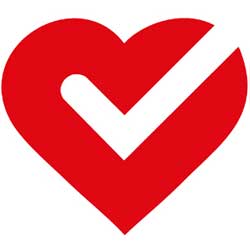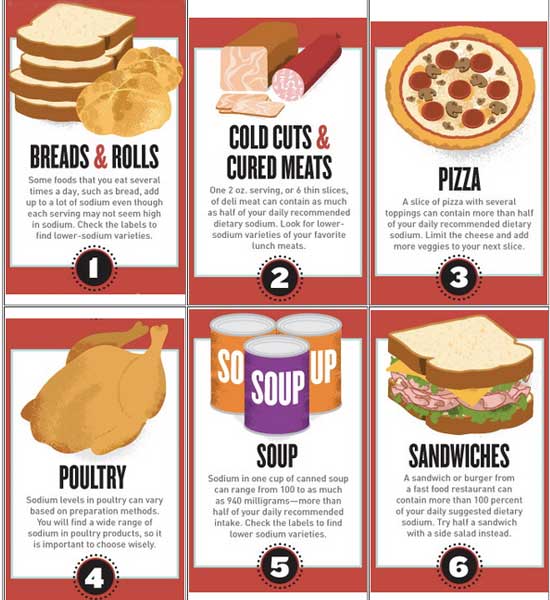Do you know how much sodium is safe to consume on a daily basis? And perhaps more importantly, do you know how much sodium is actually in the foods you eat? If you answered ‘no’ to either of these questions, the American Heart Association is here to help. The organization is seeking to provide some clarity on the topic of sodium with the introduction of its “Salty Six” – a list of six popular foods that are likely adding the highest levels of sodium to your diet.
It’s no secret that foods like canned soup and salty pizza made the list for their outrageous levels of sodium. But would you be surprised to know that bread and rolls ranked number one on the Salty Six and poultry and sandwiches followed not far behind?
Why is it important to know how much sodium we’re consuming? For one, it’s key in maintaining a balanced, heart-healthy diet. Secondly, high sodium levels contribute to a variety of serious health problems, including high blood pressure and increased risk for heart disease and stroke. Less serious effects of a high-sodium diet can include puffy face, fatigue, bags under the eyes, swollen fingers, and bloating.
According to the American Heart Association, the average adult should consume no more than 1,500 mg of sodium a day. However, the average American currently consumes more than twice that amount: about 3,400 milligrams a day on average, consequently doubling their risk for the above-mentioned health concerns. 
So how can we become more aware of the foods we are eating, taking into consideration their fat, sugar and sodium content? For starters it’s key to understand that 75 percent of the sodium we consume comes from processed and restaurant foods, so by simply limiting those foods we can carve a great deal of salt out of our diets.
In addition to providing the Salty Six guide for consumer knowledge and convenience, the American Heart Association also recommends looking for products with the “Healthy Ones” heart check mark the next time you’re at the grocery store. Foods marked with this red stamp meet the AHA’S food criteria for saturated fat and cholesterol for healthy people older than age 2.
Also Read:
8 Essentials for Making Great Soup

